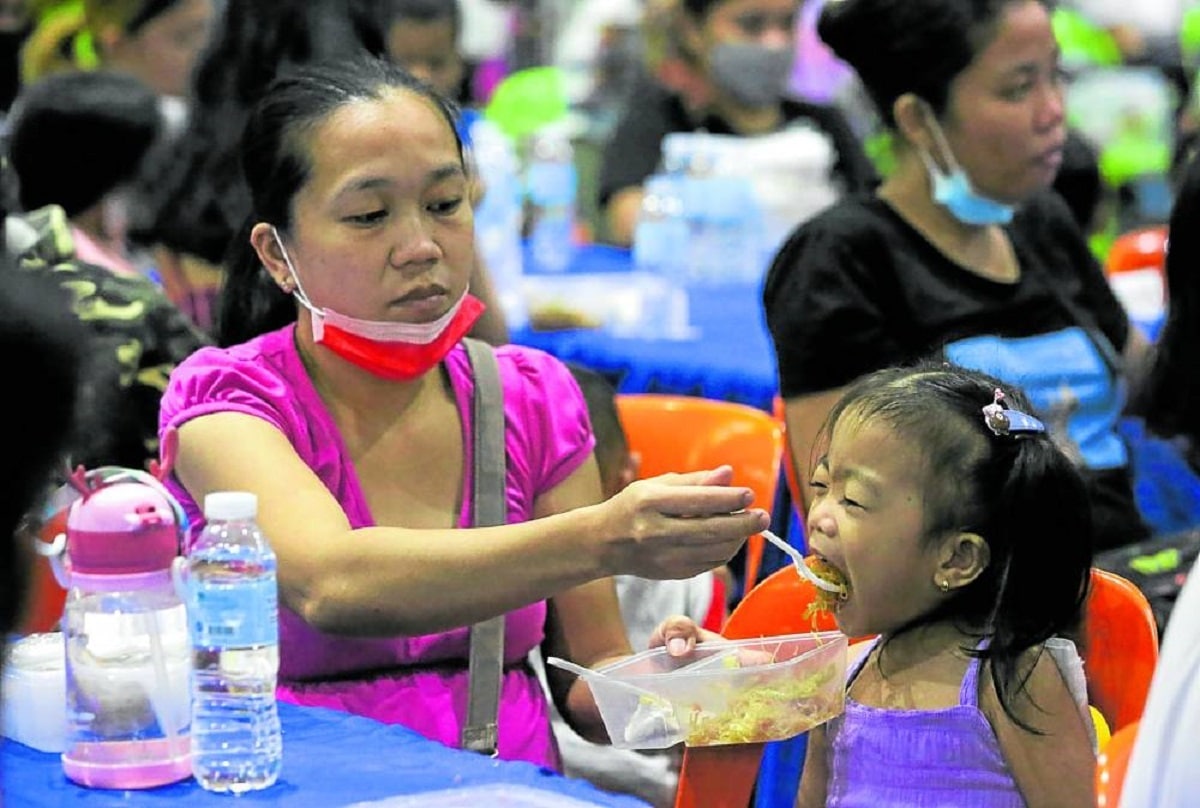
BASIC NEED The Philippines is faring worse compared to its Southeast Asian neighbors in terms of “food insecurity,” according to a United Nations assessment. Photo taken in May 2023 during a feeding program at Rizal High School, Pasig City. —LYN RILLON
About 51 million Filipinos experienced moderate or severe “food insecurity’’ from 2021 to 2023, making the Philippine situation the worst in Southeast Asia, according to a United Nations study.
The UN’s latest report on the State of Food Security and Nutrition in the World showed that the country had the highest number of moderately or severely food-insecure individuals in the region, comprising nearly half of the 115.8 million people facing such difficulty in their daily life.
Access at all times
Myanmar came in second in the region with 17.4 million, followed by Indonesia with 13.6 million and Vietnam with 10.6 million. According to the United Nations, a person is considered food insecure if he or she lacks regular access to safe and nutritious food for normal growth and development and for an active and healthy life.
READ: Why not enough food?
The United Nations defines food security, on the other hand, as a situation where all people, at all times, have physical, social and economic access to sufficient, safe and nutritious food that meets their dietary needs and food preferences.
Elusive ‘Zero Hunger
The rate of moderate or severe food insecurity in the total population was 44.1 percent in the Philippines, the third highest in the region, after Timor-Leste (53.7 percent) and Cambodia (50.5 percent).The report also showed around 6.9 million Filipinos, or 5.9 percent of the total population, were undernourished during the 2021-2023 period.
The average cost of a healthy diet in the country increased to $4.10 per person daily in 2022, higher than the $3.84 in 2021. At this level, it became more expensive than the world average of $3.96 per person. Despite this, the number of Filipinos who couldn’t afford a healthy diet stood at 55.6 million that year, from 58.5 million in 2021.
In 2023, the UN report said, around 29 percent of the global population—equivalent to 2.33 billion people—lacked regular access to food as measured by the prevalence of moderate or severe food insecurity. Of this number, over 864 million people experienced severe food insecurity.
“The assessment of global hunger in 2023, measured by the prevalence of undernourishment reveals a continuing lack of progress towards the goal of Zero Hunger. After rising sharply from 2019 to 2021, the proportion of the world population facing hunger persisted at virtually the same level for three consecutive years,” the United Nations said.
It said it expected that by 2030 and beyond a significantly higher number of people would remain “hungry, food insecure, and malnourished” primarily due to the lack of action in addressing the financial challenges of achieving food security and nutrition.
The report also took note that 60 percent of Philippine public spending on food security and nutrition was directed toward tackling the main causes of food insecurity and malnutrition.
The average cost of a healthy diet in the country increased to $4.10 per person daily in 2022, higher than the $3.84 in 2021. At this level, it became more expensive than the world average of $3.96 per person